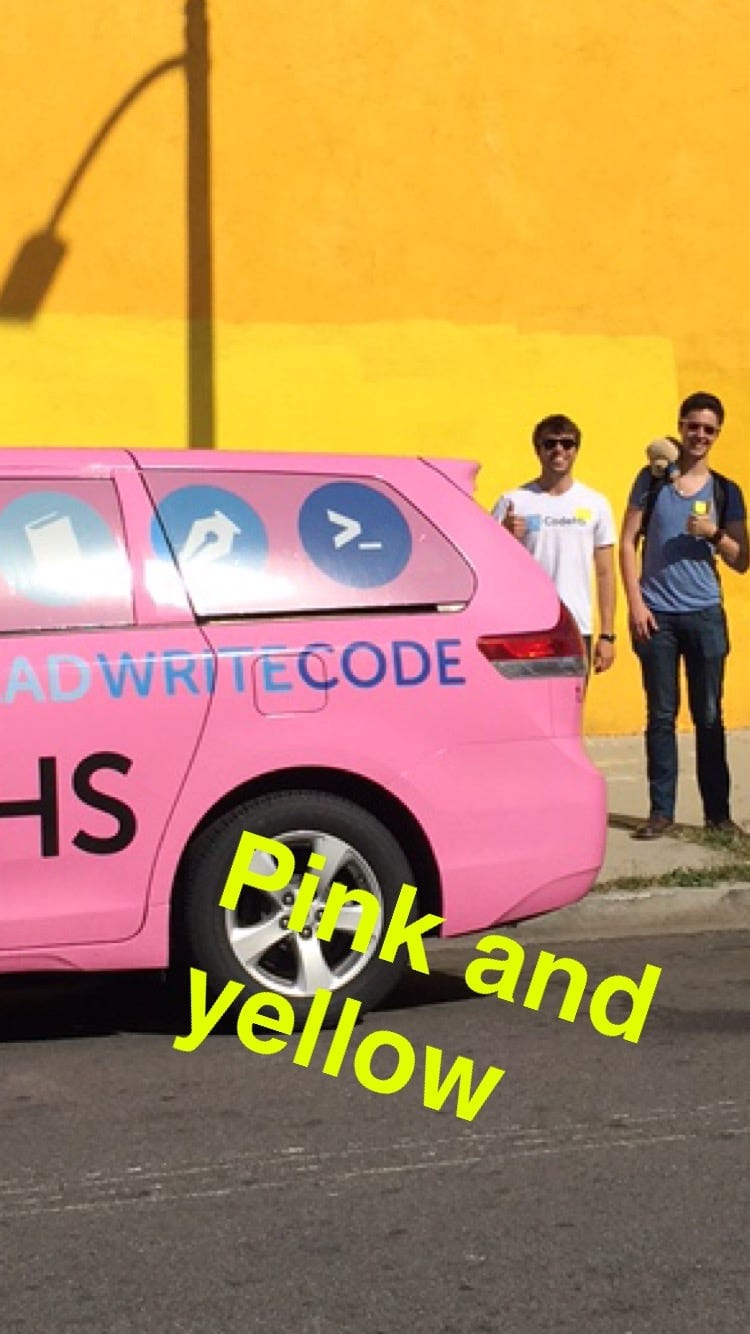Day 5 // 4/10/2015 // Los Angeles
Today we ran lots of workshops at Bell High School and Ouchi-O’Donovan School, as well as met at Riot Games!
Today we started bright and early at 6am to get to Bell High School for our first coding workshops. At Bell High School we ran three workshops to introduce students to programming with our fun and friendly Karel the Dog. We had a great workshop with the students.

We then headed over to Riot Games (Riot Games is the company that makes the game League of Legends) to meet with their team about ways to bring more computer science to local schools. There’s a lot of people out there thinking about how to make computer science education more available!

We also went over to the Ouchi-O’Donovan School. We met with the principal and got to run a workshop with some of the students. When we discussed the applications of coding, the students did a great job of coming up with answers. One of my favorite suggestions was a student who shouted out “We can use coding to build machines!”
We got to debrief with the teachers about how the workshop went for them and for their students. It is exciting to see the different ways schools are introducing coding.
In our days in the Los Angeles area, we’ve gotten to visit a wide range of schools and districts. It seems many schools we talk to are at a similar point: right on the cusp of bringing in a computer science program or really ramping one up. Some districts have coding in one school but not all, and some schools are trying to make it happen now.
We’ve seen a wide range of technology. We’ve seen the newest Mac computers and monitors as well as versions that are quite old with out-of-date browsers. Though connectivity within the school can be a problem, we haven’t run into it so far with our workshops. In our second workshop we brought in additional Chromebooks since there were more students in the classroom than computers. We were able to connect to the network from the Chromebooks easily.
Hardware and Tools are a Prerequisite, But Not Enough
In order to teach an effective computer science class in your schools, you’ll need the hardware. You’ll need up-to-date and usable computers to teach computer science. However, it’s easier and cheaper now to do that than ever before. A lower-end Chromebook (and Chromebooks are great for CodeHS), costs $150 today in April 2015. In 2004, an iMac G5 cost $1300.
That means a great computer is almost 10x cheaper than 10 years ago. And this computer is easier to use, faster, more reliable, and more up to date.
That means a great computer is almost 10x cheaper than 10 years ago. And this computer is easier to use, faster, more reliable, and more up to date.
So getting good hardware to teach computer science is now easier to do than ever, and with many districts on computer purchasing cycles, many schools have bought computers in the last five years or will buy new ones in the next five years.
So first schools need hardware. But then they also need internet and wifi connectivity. This really opens up the door to using the power of technology. Teachers we talk to often lament the unreliable internet at their school.
So I think it’s a no brainer today that schools today should have good enough hardware and internet to take advantage of new educational applications.
Schools may have computers and they may have internet,
but that does not mean they are teaching technology.
But having hardware and internet does not automatically usher you into the future of education technology. That is a first step, and a prerequisite. But after that you need curriculum and tools.
That’s where CodeHS has been immensely helpful to schools. They may have computers and they may have internet, but that does not mean they are teaching technology.
As administrators take their hardware purchases seriously (as they should), they need to take their curriculum choices seriously as well. Getting computers and internet without tools and curriculum isn’t enough. There’s a lot more after the curriculum too — with teacher training and implementation. But there is a hierarchy of concerns.
Hardware has been commoditized. Curriculum and software has not been commoditized. This is not to say schools don’t use a lot of care when choosing their curriculum — this just means schools should think about it on equal footing as part of their technology plan. Some schools do this very effectively and others have large technology implementations without cohesive curriculum plans across all subject areas.

Today’s Directions
move();
turnAround();
move();
turnAround();
move();
turnAround();


